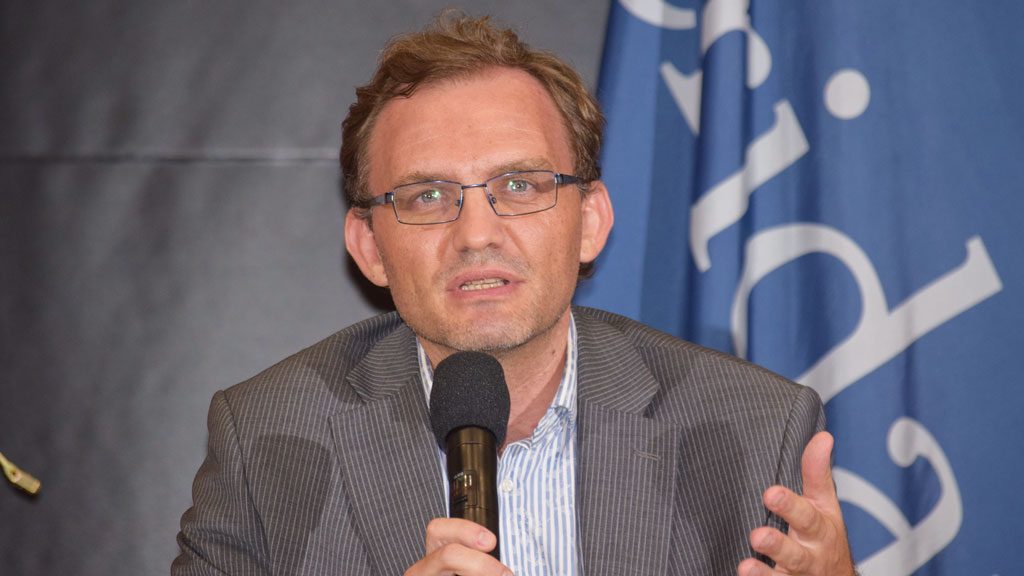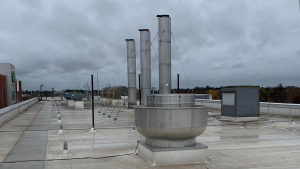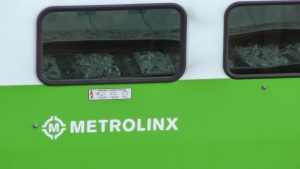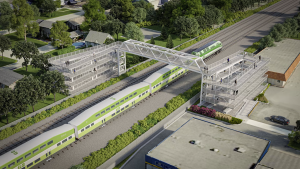Under the Ford government Metrolinx has been sent full-bore into the business of real estate development, tasked by the government with putting together mixed-use projects with private sector developers at its transit stations.
The role may not seem to have much to do with keeping its trains and buses running but Metrolinx president and CEO Phil Verster makes the case it’s a suitable responsibility as part of administering a transit business these days.
Verster and other Metrolinx managers answered questions on transit-oriented developments (TODs), GO RER expansion, station parking and siting, the curious dead end rail geometry at Hamilton’s West Harbour Go station and much more at a night-time town hall they hosted in Mississauga Sept. 5.
The regular town halls held throughout southern Ontario are an important tool for Metrolinx as it listens to concerns from commuters and in turn is able to explain how most decisions are based on hard evidence and well-thought-out policy, Verster explained in an interview.
“There is an important obligation on the part of Metrolinx to be transparent,” he said. “We have so many things going on, and so much responsibility for transit, I fervently believe that us being out in the community as we’ve been, Mississauga or Durham or Niagara, to be out there and talk to our commuters is very important.”
The evolution of Metrolinx’s stations was top of mind for several questioners with interconnected issues such as parking, sustainability, increased ridership and the TOD mandate all raised.
Metrolinx has closed two development deals, for the Mimico and Woodbine stations, in the past year and there are more to come, Leslie Woo, chief development officer for Metrolinx, told the Mississauga audience.
Parking is the dominant support infrastructure… We are working with municipalities to discuss as many options as possible,
— Mathieu Geotzke
Metrolinx
Since last December Metrolinx has been working with stakeholders and Queen’s Park to take TODs to another level, she said.
“My role right now is focusing on leveraging all infrastructure investment that we have been talking about into better integration with land use,” Woo explained. TOD is “compact development, mixed use, higher densities, in and around transit stations. The way we are going about it is working with the development industry to identify opportunities to leverage public investment and couple it with private interests through joint ventures, or different types of thinking around land uses, air rights and so forth.”
Verster later said TODs are a natural extension of a transit project, supporting city building and transit financing.
“It is a significant effort from the joint Infrastructure Ontario and Metrolinx teams to explore how we get development partners,” he said. “It has a huge impact on transit because where you can align the interests of developers and the province you can be more efficient.”
Discussing GO RER electrification with shorter trains running every 15 minutes, Verster noted ridership was expected to increase by possibly 300 per cent. Metrolinx chief planning officer Mathieu Geotzke said that puts pressure on the agency and other stakeholders to come up with parking solutions in the next 10 years.
One solution will be parking in TODs, he said, and other tools such as AV shuttles will be developed.
“Parking is the dominant support infrastructure,” said Geotzke. “It is changing and will continue to change as service changes. The needs when you have trains every 15 minutes going both ways are completely different. We are working with municipalities to discuss as many options as possible.”
Verster’s discussion of the GO RER OnCorridor project came in response to a question from a Burlington commuter who said everything seemed to be settled at a town hall he attended two years ago, with trains expected to be powered by an overhead catenary system and bridges, funding and landscaping all at advanced stages of planning. What has happened since then, the commuter asked.
That early-phase information was presented as part of the environmental assessment process but now more project detail is being developed as four qualified bidders pull together proposals in the in-market phase, Verster said. Thus the energy question — a catenary system versus hydrogen fuel cells — remains undetermined.
“This is a huge basket of work,” he said. “The capital expenditure alone is between 10 and 12 billion dollars.”
Metrolinx expects to be at the end of the proposal phase late in 2020, with contracts awarded in early 2022 and five to seven years of construction.
Chief capital officer Matt Clark was assigned the question about Hamilton’s West Harbour station, where because of the rail configuration the train from Niagara has to go past the station then reverse into a “dead end” platform, Clark explained, causing delays.
The problem will be solved, said Clark, when six kilometres of track is laid to the Confederation station. Metrolinx still needs to figure out signalling and track geometry, he explained.
In the interim, Metrolinx aims to extend an existing platform to the north, a project set for next year, Clark said.











Recent Comments
comments for this post are closed